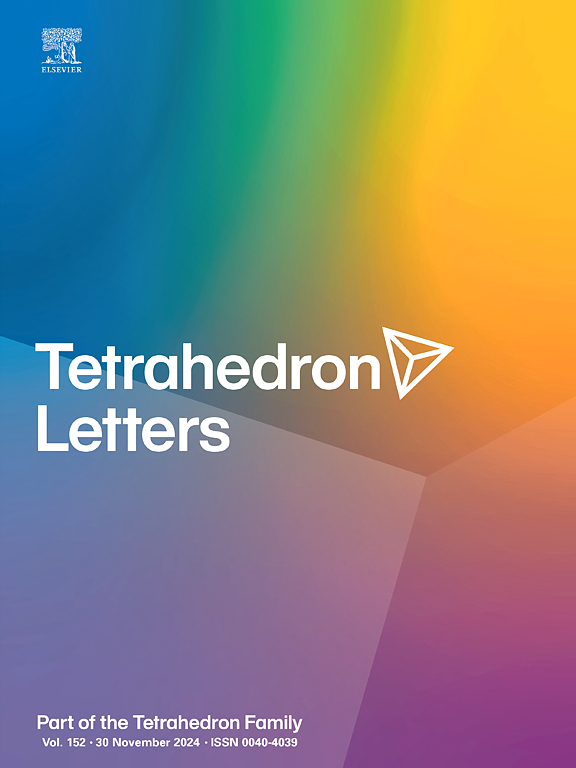方便合成 O-烷基化/N-酰基化多羟基氮杂环庚烷基化合物,用于调节 MD-2-TLR4 复合物的形成
IF 1.5
4区 化学
Q3 CHEMISTRY, ORGANIC
引用次数: 0
摘要
Toll 样受体 4(TLR4)是先天性免疫系统的重要组成部分,它能识别革兰氏阴性细菌的脂多糖(LPS)并触发免疫反应。TLR4 的激活涉及几个关键步骤,包括与 LPS 结合蛋白(LBP)、CD14 和髓样体分化蛋白 2(MD-2)相互作用,最终形成(LPS.MD-2 TLR4)2 复合物。结构研究表明,LPS酰基链插入了MD-2的疏水口袋,从而推动了TLR4的激活。受这一认识的启发,人们开发了许多天然和合成化合物,通过靶向 MD-2/TLR4 复合物来抑制 TLR4。厄里托兰 1 就是这样一个例子。氮杂环庚烷结构的构象灵活性启发我们朝着这一目标研究 O-烷基化/N-酰基化的多羟基氮杂环庚烷化合物。对接研究和分子模拟研究支持了这一观点。本文介绍了通过关键结构单元合成 O-烷基化/N-酰基化多羟基氮杂环庚烷基化合物 2-4(a-h)的过程。本文章由计算机程序翻译,如有差异,请以英文原文为准。
Convenient synthesis of O-alkylated/N-acylated polyhydroxyazepane based compounds for modulating MD-2-TLR4 complex formation
Toll-like receptor 4 (TLR4) is a critical component of the innate immune system, recognizing lipopolysaccharide (LPS) from Gram-negative bacteria and triggering immune responses. The activation of TLR4 involves several key steps, including interactions with LPS-binding protein (LBP), CD14, and myeloid differentiation protein 2 (MD-2), culminating in the formation of the (LPS.MD-2 TLR4)2 complex. Structural insights show that LPS acyl chains insert into the hydrophobic pocket of MD-2, driving TLR4 activation. Inspired by this understanding, numerous natural and synthetic compounds have been developed to inhibit TLR4 by targeting the MD-2/TLR4 complex. Eritoran 1, is one such illustration. The conformational flexibility of azepane architecture inspired us to visualize O-alkylated/N-acylated polyhydroxyazepane-based compounds toward this objective. The docking studies and molecular simulation studies supported the rationale. Synthesis of O-alkylated/N-acylated polyhydroxyazepane-based compounds 2-4 (a-h) through a key building block is described herein.
求助全文
通过发布文献求助,成功后即可免费获取论文全文。
去求助
来源期刊

Tetrahedron Letters
化学-有机化学
CiteScore
3.50
自引率
5.60%
发文量
521
审稿时长
28 days
期刊介绍:
Tetrahedron Letters provides maximum dissemination of outstanding developments in organic chemistry. The journal is published weekly and covers developments in techniques, structures, methods and conclusions in experimental and theoretical organic chemistry. Rapid publication of timely and significant research results enables researchers from all over the world to transmit quickly their new contributions to large, international audiences.
 求助内容:
求助内容: 应助结果提醒方式:
应助结果提醒方式:


